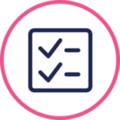How the ACT curriculum differs from the Australian curriculum
Most schools in the Australian Capital Territory follow the structure of the Australian curriculum from Foundation through to Year 10. Following this, year 11 and 12 students focus on achieving their ACT Senior Secondary Certificate, which allows for a variety of courses based on individual abilities, interests and aspirations.
Junior school ACT curriculum
For government schools and for private or religion-based schools, the implementation of the Australian curriculum allows students in the ACT to learn in line with their peers from all over Australia.
The curriculum uses a foundational three-dimensional design, which takes into account the importance of academic knowledge and understanding as well as general capabilities, skills and priorities shared across different subject matters. All aspects are designed to facilitate the groundwork for students to achieve well and negotiate modern life.
Specific to ACT schools, an Aqua Safe Water Safety and Awareness Program is offered to Year 2 students. There is also a widespread health and wellness curriculum taught alongside the Australian curriculum in ACT schools, which includes learning around healthy food, movement and active travel.
ACT curriculum options for senior students
For Year 11 and 12 students, there are several course options and learning areas within the umbrella of the ACT Senior Secondary Certificate. These are categorised in the following groups, all of which provide for different outcomes depending on the needs and aspirations of the individual.
For many students, the category of course chosen will depend on their previous academic records, skills and knowledge, and also on the direction they are hoping to take with their career. These are:
– A courses, designed to fit the general abilities of Year 11 and 12 Students
– T courses for higher education preparation
– R courses for personal development, recreational or community activities
– M courses for educational experiences specifically for students with disabilities
– H courses for students who wish to work towards an undergraduate degree, accredited by an Australian university
– C courses for vocational programs delivered by Registered Training Organisations (RTO) approved by the Board of Secondary School Studies (BSSS).
Options for a Vocational Education and Training route
A selection of A, T and M courses may also offer assessment for nationally recognised vocational qualifications. Additionally, many of ACT’s senior secondary colleges are RTOs, meaning they are able to deliver school-based accredited Vocational Education and Training (VET) courses.
These courses contribute to the credits needed to achieve the ACT Senior Secondary Certificate. Whether school based or taken elsewhere, many education programs, as well as work experience undertaken during a student’s senior secondary school years, can also be recorded and contribute to the qualification.
This provides more options for students to follow a route towards a fulfilling, hands-on career and facilitates the transition between school and work.
Find out how EP can help students progress toward the ACT Senior Secondary Certificate.
Help your students excel with fun and engaging teaching software

35,000+
Curriculum aligned lessons

10,000+
Learning videos

24/7
24/7 Personal Support

50,000+
Automatically Marked Questions
35,000+
Curriculum aligned lessons
10,000+
Learning videos
24/7
24/7 Personal Support
50,000+
Automatically Marked Questions

